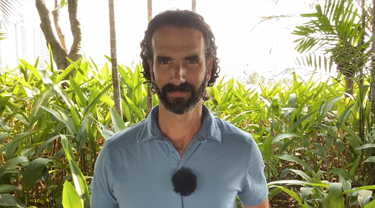As the effects of higher interest rates wash across Canada’s domestic economy, and growth among some of our traditional trade partners underwhelms, we’ve got our work cut out for us if we hope to create wealth for future generations of Canadians. Thinking outside the box may require a look beyond our front porch, and even past our immediate horizon. Some 13,000 kilometres from our closest port lies a $1.4 trillion economy that’s home to the world’s fourth-largest population. Welcome to Indonesia!
With income having grown by 27% since 2015, and expected to surge by another 48% by 2030, this expansive archipelago is home to a rapidly growing middle class. Estimated at between 5% and 6%, Indonesia’s long-term potential growth suggests far more domestic demand than we’re used to seeing among our more developed peers, many of whom have moved into the later stages of development and are home to generally older and shrinking populations.
The sheer size of Indonesia’s domestic market also helps insulate it from regional and global volatility, making it less vulnerable to global economic conditions and ensuring its role as a G20 economy, a key Association of Southeast Asian Nations (ASEAN) market and a strategic player in the Asia-Pacific region for decades to come.
At about US$240 billion a year, Indonesia’s imports have surged 30% since 2015, and are expected to grow by 7% per year over the next five years. Most of these imports are concentrated in the raw and auxiliary materials needed to help support the country’s burgeoning industry, with demand for industrial supplies, parts and fuel growing by 30% on pre-pandemic levels alone.
If there’s anything Canadians know better than hockey, it’s heavy industry and complex capital goods manufacturing. We also understand the responsibility that comes with having an economy dominated by carbon-intensive sectors. And with the Indonesian government’s commitment to achieving net zero by 2045, there could be no better partner than Canada here.
You should also check out
Learn how to expand your business into Southeast Asia with expert advice and on-the-ground insights.
What about food? We know a thing or two about food production, and the full agri-food supply chain. While Indonesia is very self-sufficient when it comes to food, with production more than doubling in the last 10 years, yield and crop management, pollution, water supply issues and the sheer growth of its population will put limits on what Indonesia can supply on its own going forward.
In addition to wheat, rye, and soybean shipments from Canada, our pre-existing trade relationship creates huge opportunities for greater co-operation on adaptation and innovation technologies and know-how. Increases in Indonesian commercial farming also create demand for Canadian potash use.
Now, to be sure, trade is already robust and growing between our countries. Canadian exports to Indonesia skyrocketed 45% last year, and Indonesia is already Canada’s largest ASEAN trading partner. Additionally, Canada and Indonesia recently signed a Joint Understanding on Development Cooperation and helped launch the ASEAN-Canada Strategic Partnership, moves that’ll only further deepen our bilateral connections and set the stage for a deeper partnership in the years ahead. Export Development Canada (EDC) has also recently opened a regional office in Jakarta.
Certainly, there’ll be challenges along the way, including environmental, social and governance (ESG) considerations. Canada also doesn’t have the same historical breadth or depth of presence in-market or in-region. Developing a successful and robust business strategy will also take time, which means we’ll be playing catchup relative to our peers. Our export basket has also been fairly one-dimensional, with fertilizers and grain making up the lion’s share of our trade with Indonesia.
But Canadian expertise in infrastructure and engineering, advanced agri-food production, ICT, cleantech and energy means that there’s tremendous scope for additional collaboration between our countries. Already, some linkages seem obvious, like supporting the green transition by pairing Canada’s approach to cleaner mining and natural resource development with Indonesia’s tremendous critical mineral reserves. We must also leverage our agri-food access in-market to match the demands of a growing Indonesian middle class. Canada can also help support Indonesia’s development plan by exporting more advanced parts, equipment and expertise in Canadian construction and infrastructure.
The bottom line?
Indonesia is ambitiously pursuing a deeper role in the global economy, with plenty of attention headed its way. Competition for opportunities and partnerships here will only grow over time. A multi-faceted and sectoral approach that matches Canadian expertise and business sophistication to the endless needs of this market will be key.
We’ll also want to draw on our experience in international markets, and highlight the quality, standards, and professionalism that have come to define the Canadian brand. Because regardless of the sector, the demand from Indonesia is here … for those Canadian companies willing and able to supply it.
This week, a very special thanks to Kevin Elliott, country risk analyst in EDC’s Economic & Political Intelligence Centre.
As always, at EDC Economics, we value your feedback. If you have ideas for topics that you’d like us to explore, please email us at economics@edc.ca and we’ll do our best to cover them.
This commentary is presented for informational purposes only. It’s not intended to be a comprehensive or detailed statement on any subject and no representations or warranties, express or implied, are made as to its accuracy, timeliness or completeness. Nothing in this commentary is intended to provide financial, legal, accounting or tax advice nor should it be relied upon. EDC nor the author is liable whatsoever for any loss or damage caused by, or resulting from, any use of or any inaccuracies, errors or omissions in the information provided.







